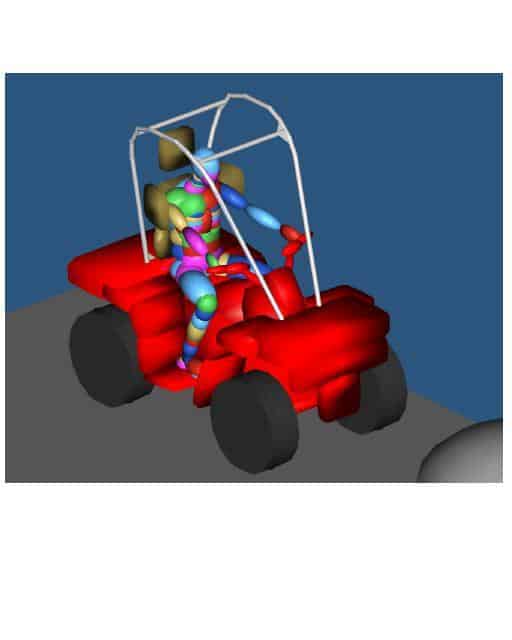In early 2009, Australian engineer, Shane Richardson, completed his thesis into the “Performance Criteria For Effective Structural Rollover Protective Systems For Light Passenger Vehicles”. Part of his thesis included an evaluation of the New Zealand Department of Labour’s ROPS guidelines for ATVs or quad bikes.
 Richardson points out that the guidelines have strong similarities to the Australian Standard for protective Structures on Earth-moving Machinery (AS2294) although quad bikes may tipover or undergo a multi-directional tumble, the latter action is not one considered by AS 2294. Richardson believed that the earth-moving machinery “origin” of many of the basic concepts and calculations in the NZ DoL guidelines made them useful but inadequate.
Richardson points out that the guidelines have strong similarities to the Australian Standard for protective Structures on Earth-moving Machinery (AS2294) although quad bikes may tipover or undergo a multi-directional tumble, the latter action is not one considered by AS 2294. Richardson believed that the earth-moving machinery “origin” of many of the basic concepts and calculations in the NZ DoL guidelines made them useful but inadequate.
He argued that the quad bike “is more akin to a 4×4 than an earthmover” and it was from the 4×4 comparison that he undertook his research.
Elsewhere in SafetyAtWorkBlog we have asked where the new quad bike concept vehicles are. Richardson developed a concept for a quadbike ROPS that would protect the rider from a rollover in any direction. Significantly the ROPS concept also incorporated “a restraint system which incorporates a high-backed seat and headrest, side bolsters and cross-over seatbelt restraint”. Regular readers will be aware of our criticism of the practicality of seatbelts on an agricultural work vehicle.
Seatbelts on quad bikes continue to be a contentious issue as is evident in the 18 January 2011 article where the idea of mandatory seat belts was described as “ridiculous”.
A significant element of Richardson’s ROPS concept is that he is considering a redesign of the quad bike seat. Many of the criticisms of quad bike safety initiatives comes from these devices being added-on to existing vehicles. Analysing the fundamental design of the vehicle will minimise much of the ridicule when safe operation is integrated into new quad bike designs.

Hmm..I like the concept of redesigning the bike back seat for the purpose of comfort. Safe operation can be gained by doing this but on the other side it may be an expensive step too. Redesigning can involve new equipments too.
Kevin,
There appear to be three issues raised here.
Firstly the adequacy of the New Zealand guidelines. I don\’t forsee this being a significant problem in the future because, as has already been proposed, a group of scientists with expertise in this field could competently come up with a meaningful standard as with any other standard that is produced.
Secondly, as you suggested the ROPS issue for existing quadbikes has been covered extensively in blogs elsewhere.
Thirdly, Dr. Richardsons suggestion of a concept design for future quadbikes. Dr Richardson should be commended for his forward thinking and whether this concept or variations of it are to be used in the future, it would be up to the resolve of manufacturers and governments. The tricky bit is getting the resolve of authorities and ensuring the design fits the requirements of the end user.
Tractor and earthmoving machinery manufacturers opposed ROPS initially, but it is now an integral part of their safety design.
Car manufacturers regularly produce concept designs to improve safety however quadbike manufacturers are sadly lacking in this area. The concept does not have to be the final product, but it promotes thought and innovation to produce improved outcomes in OH&S.